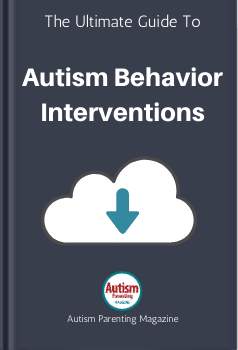Pathological Demand Avoidance (PDA) and Oppositional Defiant Dysfunction (ODD) are two circumstances that share similarities however are distinct of their nature. Each are characterised by intense resistance to requests or duties.
Nonetheless, whereas PDA is proposed as a subtype of autism spectrum dysfunction, ODD entails a persistent sample of defiance, arguing, and refusal to comply with instructions, notably with authority figures.
Understanding the variations between PDA vs. ODD is essential for efficient analysis and intervention.
Obtain your FREE information on
Autism Habits Interventions
Understanding Pathological Demand Avoidance (PDA)
Pathological demand avoidance (PDA) is mostly attributed to autistic people. These with ASD and PDA will typically show important adversarial behaviors upon being advised to carry out what others could attribute as every day duties or routines
Equally, it may be triggered when these individuals are directed to do one thing difficult, even when it could be one thing they want to do.
Pathological demand avoidance is just not thought of a proper analysis in the US because it has not been included within the newest version of the Diagnostic and Statistical Handbook (DSM-V). It’s thought of extra of a possible part of ASD.
It must be famous that PDA is just not triggered by defiance of being advised to do one thing. As a substitute, the particular person avoids the request or demand primarily based on nervousness about on a regular basis duties or difficult calls for.
It’s estimated that roughly 10% of these with ASD additionally could also be categorized as having PDA. Additional, it’s famous that as many as 30% of these with ASD could present some traits of PDA as properly.
Understanding Oppositional Defiant Dysfunction (ODD)
Oppositional defiant dysfunction (ODD) is a proper DSM V analysis that’s typically identified throughout childhood.
ODD is categorized by a power sample of arguing, anger, or irritation in the direction of those that are perceived to be figures in authority. These can embrace mother and father, academics, directors, coaches, or regulation enforcement.

These youngsters with ODD are extra apt to:
- argue with others,
- show vengeful habits when limits are positioned upon them,
- have issue taking accountability for his or her habits,
- exhibit malicious habits at the least twice within the six months earlier to their analysis.
It’s unknown what the precise reason for ODD could also be. Nonetheless, it’s theorized {that a} complicated interaction of genetics and environmental causes could make a toddler extra apt to show these behaviors.
It’s estimated that between 1-11% of kids fall into the class of oppositional defiant dysfunction, with the overwhelming proportion of kids being male.
PDA vs ODD: The important thing variations
Initially, it could appear that the habits of each these with PDA and ODD seems fairly related. That being mentioned, there are some very notable variations between the 2 points.
Motivation and emotional responses
The motivations for the aggressive response between ODD and PDA are additionally very completely different. These with PDA are displaying habits primarily from an anxiety-based response to keep away from a requirement that’s positioned upon them.
These people with ODD are responding from a spot of anger to regulate the state of affairs that they understand these in authority are attempting to say over them.
As an example, whenever you ask an individual with PDA to do an project, they might reply with excuses or react harshly. This isn’t as a result of they don’t wish to do the homework. As a substitute, it’s as a result of they’ve nervousness and are overwhelmed about even beginning the duty.
In distinction, a toddler with ODD could not want to do the homework and react with anger as a result of it’s a determine of authority telling them what to do. They don’t wish to comply with the foundations and constraints they understand are being positioned upon them.
Social abilities and defiance patterns
These with PDA will sometimes have good floor social abilities and make the most of them to aim to keep away from calls for and routines that they deem anxiety-provoking.
These with ODD are likely to have social abilities which are typical for his or her peer group. Nonetheless, because of their historical past of defiant behaviors, they might have challenges in sustaining relationships.
An instance of this can be {that a} youngster with PDA will attempt to discuss their method out of doing a chore and use their social abilities to distract from the duty at hand because of nervousness.
In the meantime, a toddler with ODD will react with anger and defiance when given an similar chore as a result of they don’t wish to launch management to an individual who they understand as a determine of authority.
Behavioral and defiance patterns
These with PDA will typically keep away from calls for that they understand as creating nervousness and can reply on this identical method, no matter whether or not it’s a determine of authority, peer, or dad or mum.
When these with ODD, they are typically extra prone to refuse or turn into defiant towards these figures they see in authority. They might reply positively to others who make the identical calls for, relying on their viewpoint of that particular person.

Obtain your FREE information on
Autism Habits Interventions
PDA is pushed by nervousness, inflicting resistance to calls for that really feel threatening. Due to that, folks with PDA could also be inflexible in disturbing conditions however extra versatile in others.
These with ODD are likely to show a main emotion of anger versus nervousness. They are going to be much less apt to be versatile with regards to their motivations or being requested to comply with the foundations.
Managing PDA and ODD
Regardless of some similarities between PDA and ODD, we intervene in each of those circumstances in a vastly completely different method usually.
Within the case of PDA, attempt to reduce direct requests and supply decisions each time potential. Doing so offers the kid the power to really feel that they’ve some management over the state of affairs, and this reduces emotions of tension.
Moreover, predictability and routine are equated with security for these with PDA, so present them with a routine that may assist them perceive what to anticipate. Instructing coping abilities reminiscent of mindfulness and respiration may be very useful on this regard as properly.
People with ODD can profit from remedy, together with cognitive behavioral remedy (CBT), to deal with unfavorable thought patterns. Parental enrichment packages may assist reinforce constructive behaviors persistently.
Instructing these youngsters set up assertive battle decision abilities versus an aggressive and defiant dealing with of issues will also be extremely helpful.
Similarities between PDA and ODD
At first look, PDA and ODD have a number of traits that overlap. Each contain refusal or defiance to do a selected exercise. In each circumstances, the dad or mum or authority determine may even see anger and defiance towards following a selected path.

Moreover, in each PDA and ODD, one may even see arguing, defiance, and refusal. When requested to do a process, the irritability or sudden behavioral change could even look related.
The first distinction is the set off and motive that lies behind the behavioral response (i.e., nervousness versus anger and defiance).
Supporting your youngster’s distinctive wants
In the end, your youngster greatest and what could also be behind the motivations for his or her habits. Suppose the inspiration behind their refusal to comply with instructions is nervousness. In that case, there are numerous efficient technique of coping with such habits that can lower the extent of PDA.
Suppose the trigger is defiance in the direction of figures of authority, as is the case in ODD. Many efficient interventions in anger administration and parenting abilities additionally exist to assist with this difficult dysfunction.
Whichever difficulty you might be coping with, bear in mind it’s your endurance and perseverance that finally will prevail over the challenges of both difficulty.
FAQs
Q: Is ODD on the spectrum?
A: No, oppositional defiant dysfunction (ODD) is just not part of the autism spectrum issues. That being mentioned, a good portion of kids with ASD could exhibit a few of the signs of ODD at one time or one other.
Q: Can you’ve got PDA and never be autistic?
A: Sure, it’s potential to exhibit PDA behaviors and never have autism. Many different circumstances (reminiscent of ADHD) or different anxiety-based issues can foster PDA in youngsters.
Q: What are the examples of PDA habits?
A: In PDA, a number of examples may be discovered that spotlight these behaviors. These embrace extreme procrastination when requested to do a process that could be deemed difficult, irritability or anger when requested to do a chore or process, issue in dealing with any change in routine, habits that’s obsessive in nature, in addition to issue with sensory stimuli.
Q: What does PDA appear like in an grownup?
A: Just like PDA in youngsters, adults exhibit many parallel signs. These embrace having important issue with change in routine, avoidance of complicated or anxiety-provoking duties, irritability or low frustration tolerance, or obsessive habits.
References
O’Nions, E., & Eaton, J. (2020). Excessive/‘pathological’ demand avoidance: an outline. Paediatrics and Baby Well being, 30(12), 411-415.
Petrucciani, S., & Recchia, C. (2014). DSM V. s.n.
What’s PDA? – PDA North America. PDA North America -. (2024, November 2). https://pdanorthamerica.org/what-is-pda/
Inexperienced, J., Absoud, M., Grahame, V., Malik, O., Simonoff, E., Le Couteur, A., & Baird, G. (2018). Pathological demand avoidance: signs however not a syndrome. The Lancet Baby & Adolescent Well being, 2(6), 455-464.
Burke, J. D., & Romano-Verthelyi, A. M. (2018). Oppositional defiant dysfunction. In Developmental pathways to disruptive, impulse-control and conduct issues (pp. 21-52). Educational Press.
Hawes, D. J., Gardner, F., Dadds, M. R., Frick, P. J., Kimonis, E. R., Burke, J. D., & Fairchild, G. (2023). Oppositional defiant dysfunction. Nature Critiques Illness Primers, 9(1), 31.
Hinze, E., Attwood, T., & Garnett, M. Differentiating Pathological Demand Avoidance in Autism from Oppositional Defiant Dysfunction.
Woods, R. (2023). ” Pathological Demand-Avoidance”(PDA): A” pathological”/excessive avoidance to its hype. ECHO Autism Summer time Pop-up Session: PDA.
Duncan, M., Healy, Z., Fidler, R., & Christie, P. (2011). Understanding pathological demand avoidance syndrome in youngsters: A information for folks, academics and different professionals. Jessica Kingsley Publishers.
Hood, B. S., Elrod, M. G., & DeWine, D. B. (2015). Remedy of childhood oppositional defiant dysfunction. Present Remedy Choices in Pediatrics, 1, 155-167.
Frick, P. J., & Nigg, J. T. (2012). Present points within the analysis of consideration deficit hyperactivity dysfunction, oppositional defiant dysfunction, and conduct dysfunction. Annual evaluation of medical psychology, 8(1), 77-107.
O’Nions, E., & Eaton, J. (2020). Excessive/‘pathological’ demand avoidance: an outline. Pediatrics and Baby Well being, 30(12), 411-415.


